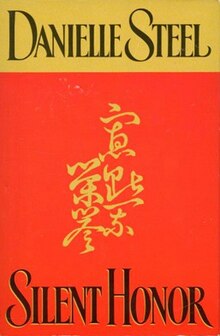Plot summary
In August, 1941, Hiroko visits the United States from Japan, as she has an uncle, aunt, and cousins living there. Upon first arrival, she settles in well and continues to lead a regular life, however, on December 7, 1941 — Pearl Harbor is bombed, thus making them an enemy in their community and across the USA, as they are considered foreigners. Ordered to stay by her father, she remains occupied in California, however, the military are ordered to remove all Japanese citizens, and she ends up being put in a detention centre, having to fight to stay alive. [2]
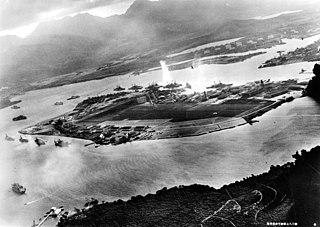
The attack on Pearl Harbor was a surprise military strike by the Imperial Japanese Navy Air Service on the American naval base at Pearl Harbor in Honolulu, Hawaii, in the United States, just before 8:00 a.m. on Sunday, December 7, 1941. At the time, the United States was a neutral country in the World War II conflict. The attack on Hawaii and other U.S. territories led the United States to formally enter World War II on the side of the Allies the day following the attack, on December 8, 1941. The Japanese military leadership referred to the attack as the Hawaii Operation and Operation AI, and as Operation Z during its planning.

USS Enterprise (CV-6) was a Yorktown-class carrier built for the United States Navy during the 1930s. She was the seventh U.S. Navy vessel of that name. Colloquially called "The Big E", she was the sixth aircraft carrier of the United States Navy. Launched in 1936, she was the only Yorktown-class and one of only three American carriers commissioned before World War II to survive the war. She participated in more major actions of the war against Japan than any other United States ship. These actions included the attack on Pearl Harbor — 18 Douglas SBD Dauntless dive bombers of her air group arrived over the harbor during the attack; seven were shot down with eight airmen killed and two wounded, making her the only American aircraft carrier with men at Pearl Harbor during the attack and the first to sustain casualties during the Pacific War — the Battle of Midway, the Battle of the Eastern Solomons, the Battle of the Santa Cruz Islands, various other air-sea engagements during the Guadalcanal Campaign, the Battle of the Philippine Sea, and the Battle of Leyte Gulf. Enterprise earned 20 battle stars, the most for any U.S. warship in World War II, and was the most decorated U.S. ship of World War II. She was also the first American ship to sink a full-sized enemy warship after the Pacific War had been declared when her aircraft sank the Japanese submarine I-70 on 10 December 1941. On three occasions during the war, the Japanese announced that she had been sunk in battle, inspiring her nickname "The Grey Ghost". By the end of the war, her planes and guns had downed 911 enemy planes, sunk 71 ships, and damaged or destroyed 192 more.

USS Triton (SS-201) was the fourth Tambor-class submarine to be commissioned in the United States Navy in the years leading up to the country's December 1941 entry into World War II. Her wartime service was in the Pacific Ocean. She completed five patrols in the following 14 months, and is credited with the sinking of over 20,000 tons of Japanese shipping and warships. She was lost with all hands on or around March 15, 1943. Of the twelve Tambor-class submarines, only five survived the war.

USS Halibut (SS-232), a Gato-class submarine, was the first ship of the United States Navy to be named for the halibut, a large species of flatfish.

USS Growler (SS-215), a Gato-class submarine, was the third ship of the United States Navy named for the growler.
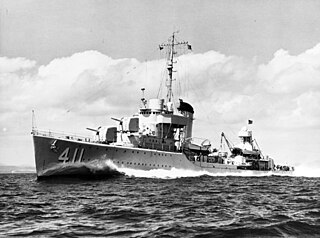
USS Anderson (DD-411) was a Sims-class destroyer in the United States Navy. She was named for Rear Admiral Edwin Alexander Anderson, Jr., a Medal of Honor recipient.

USS Skipjack (SS-184), was a Salmon-class submarine, the second ship of the United States Navy to be named after the skipjack tuna. She earned multiple battle stars during World War II and then was sunk, remarkably, by an atomic bomb during post-World War II testing in Operation Crossroads. Among the most "thoroughly sunk" ships, she was refloated and then sunk a second time as a target ship two years later.
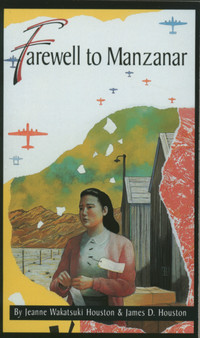
Farewell to Manzanar is a memoir published in 1973 by Jeanne Wakatsuki Houston and James D. Houston. The book describes the experiences of Jeanne Wakatsuki and her family before, during, and following their relocation to the Manzanar internment camp due to the United States government's internment of Japanese Americans during World War II. It was adapted into a made-for-TV movie in 1976 starring Yuki Shimoda, Nobu McCarthy, James Saito, Pat Morita, and Mako.
USS Tinosa (SS-283), a Gato-class submarine, was the first ship of the United States Navy to be named for the tinosa.

USS Gwin (DD-433), a Gleaves-class destroyer, was the third ship of the United States Navy to be named for Lieutenant Commander William Gwin, an American Civil War officer who commanded river boats against Confederate forces in Alabama.
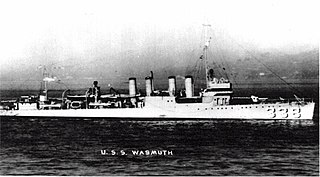
USS Wasmuth (DD-338/DMS-15) was a Clemson-class destroyer in the United States Navy following World War I.

USS Henley (DD-391), a Bagley-class destroyer, was the 2nd ship of the United States Navy to be named for Captain Robert Henley, an officer in the United States Navy during the Quasi-War with France, the War of 1812 and the Second Barbary War.

USS Bowers (DE-637/APD-40) was a Buckley-class destroyer escort of the United States Navy, was named in honor of Ensign Robert K. Bowers (1915-1941), who was killed in action aboard the battleship USS California during the Japanese attack on Pearl Harbor on 7 December 1941. The ship was laid down on 28 May 1943 at San Francisco, California, by the Bethlehem Steel Company; launched on 31 October, sponsored by Mrs. Eunice Bowers, the mother of Ensign Bowers; and commissioned on 27 January 1944. The ship served in World War II in the Pacific
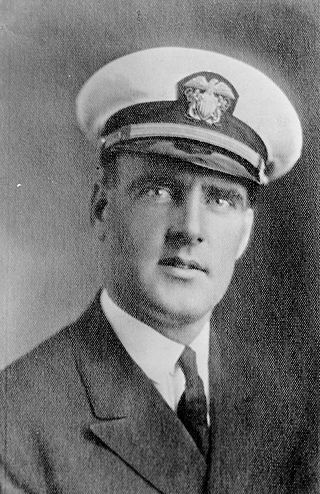
Edwin Joseph Hill, was a United States Navy sailor who was stationed on the USS Nevada (BB-36) during the attack on Pearl Harbor, Hawaii, on December 7, 1941. He posthumously received the Medal of Honor for his actions during the battle.

Roberta Morgan Wohlstetter was an American historian of U.S. military intelligence. In 1962 she authored Pearl Harbor: Warning and Decision. The book was based on a several-year study of the Japanese attack on Pearl Harbor in December 1941 and is still considered the foundational study of military surprises. The Presidential Medal of Freedom was awarded to her in 1985 by President Ronald Reagan.

USS Wyman (DE-38) was an Evarts-class destroyer escort of the United States Navy during World War II. She was promptly sent off into the Pacific Ocean to protect convoys and other ships from Japanese submarines and fighter aircraft. She performed dangerous work, including participating in the sinking of two Japanese submarines, and was awarded six battle stars.

USS Herbert C. Jones (DE-137) was an Edsall-class destroyer escort built for the U.S. Navy during World War II. She served in the Atlantic Ocean and provided destroyer escort protection against submarine and air attack for Navy vessels and convoys.
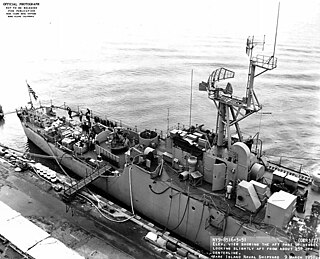
USS Joyce (DE-317) was originally commissioned as a US Coast Guard Edsall-class destroyer escort built for the U.S. Navy during World War II. She served in the Atlantic Ocean and the Pacific Ocean and provided destroyer escort protection against submarine and air attack for Navy vessels and convoys. During its World War II service, on two different engagements with enemy submarines, the Joyce rescued survivors of the tanker SS Pan- Pennsylvania and its sister ship USS Leopold. Joyce received one battle star for its service during World War II.

USS Haverfield (DE-393) was an Edsall-class destroyer escort built for the U.S. Navy during World War II. She served in the Atlantic Ocean and the Pacific Ocean and provided destroyer escort protection against submarine and air attack for Navy vessels and convoys.

Weedflower is a 2006 American children's historical novel by Cynthia Kadohata, the author of the award-winning Kira-Kira. The cover photography of the first edition is by Kamil Vojnar. The story is set in the United States during World War II and told from the perspective of 12-year-old Japanese-American Sumiko. A 6.5-hour-long audiobook version of Weedflower, read by Kimberly Farr, has been published.
